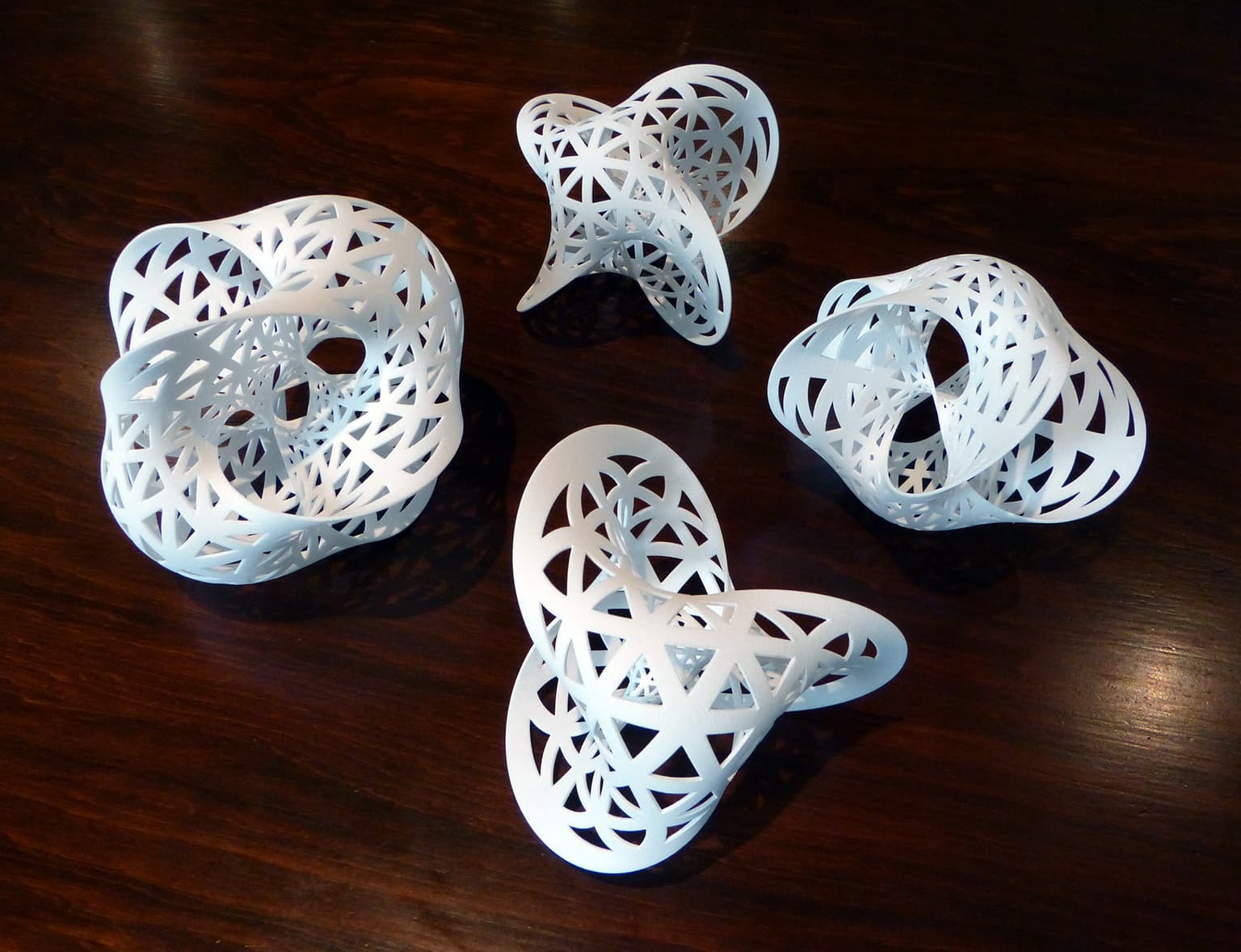2013 Joint Mathematics Meetings
Saul Schleimer and Henry Segerman
Artists
Saul Schleimer
Reader in Mathematics
Mathematics Institute, University of Warwick
Coventry, United Kingdom
Statement
Saul Schleimer is a geometric topologist, working at the University of Warwick. His other interests include combinatorial group theory and computation. He is especially interested in the interplay between these fields and additionally in visualization of ideas from these fields. Henry Segerman is a research fellow in the Department of Mathematics and Statistics at the University of Melbourne. His mathematical research is in 3-dimensional geometry and topology, and concepts from those areas often appear in his work. Other artistic interests involve procedural generation, self reference, ambigrams and puzzles. Many of our recent projects have involved objects native to the 3-sphere, realized in Euclidean space via stereographic projection. This project continues the theme: we realize Seifert surfaces for the (4,3), (5,3) and (5,4) torus knots, and for the (3,3) torus link, as leaves of the associated Milnor fibration.
Artworks

Seifert surfaces for torus knots and links
Four pieces: 111x111x105mm, 125x130x99mm, 125x125x118mm, 103x103x103mm
PA 2200 Plastic, Selective-Laser-Sintered
2012